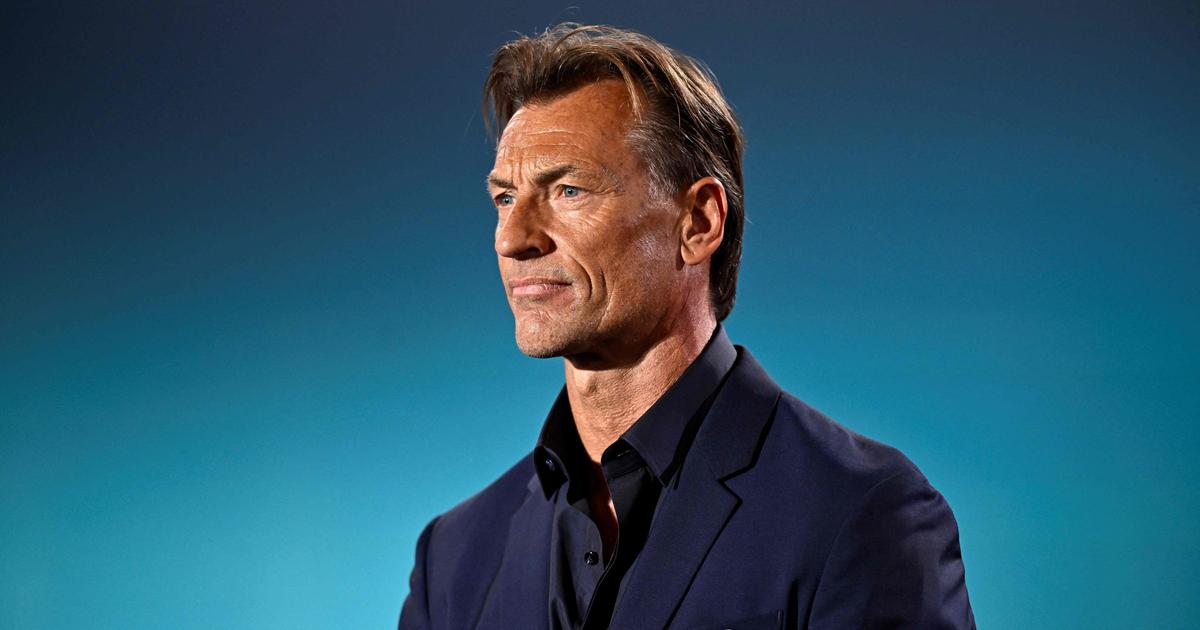Icon: enlarge
Women's football at Bayern Munich
Photo:
Werek / imago images
The gentlemen were concerned about "the female well-being and the maintenance of morality".
This is why the Bundestag banned the German Football Association (DFB) in Berlin from playing women's football within the DFB on July 30, 1955.
"In the fight for the ball, feminine grace disappears, body and soul inevitably suffer damage, and displaying the body violates propriety and decency," the decision said.
The DFB maintained the official ban for 15 years.
The women played anyway.
It was only when the approximately 50,000 active female soccer players in West Germany threatened to found their own association that the DFB lifted the ban on October 31, 1970.
At that time there was no question of equality: cleats were forbidden, the balls were smaller, and the playing time lasted only 60 minutes until 1993.
After all, women are the weaker sex, according to the DFB.
It was 50 years ago that he was accepted into the DFB.
Since then, a lot has happened.
But to understand what has shaped women's football in Germany, one has to look into its history: How did it develop in West Germany?
Like in the GDR?
While women were banned from playing in Germany for a long time, there was more freedom for East German players - but still hardly any funding.
Silvia Neid and Sabine Seidel, two of the biggest stars from West and East, remember.
At the age of eleven, Silvia Neid was playing alongside adult women because there weren't enough players of her age.
The offensive player, who would later shape her generation, had to listen to macho slogans next to the pitch early on.
At first, spectators only came to the stadium to swap their shirts, the later national coach told SPIEGEL.
The now 56-year-old was unable to earn any money with football in the early stages of her career.
That only changed when the flower wholesaler Gerhard Neuser joined TSV Siegen.
He offered ambitious players financial compensation and arranged jobs and living spaces in the south-Westphalian province.
The then 21-year-old Enid was convinced of this in 1985.
The trained butcher shop specialist received 600 D-Marks and drove tulips, roses and orchids through Siegerland 30 hours a week.
"I really wanted to be one of the best players in Germany. Then I didn't care about the job," says Neid, who had won six championship titles and five cup wins with TSV by 1996.
Icon: enlarge
Silvia Neid (left) during an international match
Photo: via www.imago-images.de / imago images / Thomas Zimmermann
The first German EM title in 1989 was the breakthrough in the struggle for more recognition for the 111-time national player.
Even if the only bonus was the legendary coffee service from the association.
In the 4-1 final win against Norway, the stadium in Osnabrück was sold out and the television broadcast live.
One year after the triumph in their own country, which the men's national team had been denied a year earlier, the DFB founded the women's Bundesliga.
Neid noticed already during the active period that each of these successes earned the women a bit more respect: "The hotels got better, the sponsors got more, the stadiums fuller and the people behind the team bigger," says Neid in retrospect: "We had to Win again and again so that everyone's talking about women's football. "
Silvia Neid as national coach at the 2011 World Cup
Photo: ODD ANDERSEN / AFP
Football was never forbidden for women in East Germany - but it was not particularly promoted in the GDR either.
Because in the sports superpower, Olympic medals counted.
"In the beginning we only trained or played against handball teams. Some women smoked or drank a beer on the sidelines - I was ashamed of that," recalls Sabine Seidel in an interview with SPIEGEL.
"The coach told us something about Brazil and we should do it. The good coaches were with the men - that's still the case today."
Numbers were sewn in themselves
Born in Dresden, she developed her athletic style of play in her youth as a track and field athlete and gymnast before joining the BSG Turbine Potsdam in 1979.
Until then, there had been no regular championship in women's football in the GDR.
Seidel was the guarantee of success for Potsdam, Turbine won the nationwide "best determination" five times - also thanks to Seidel.
There was no money - the passion for sport was in the foreground.
Women's football was never seen as a competitive sport, but was part of leisure and recreational sport.
The turbines quickly felt this.
Coach Bernd Schröder managed to organize jerseys for his players, but they had to sew on numbers and emblems themselves.
Even with the games themselves there was a lack of professionalism, so that line judges or referees sometimes did not show up: "The clearer the score became for us, the less the referees paid attention to their activities. We would be leading anyway," says Seidel today .
With the fall of the wall, many clubs failed due to the market economy conditions in sport in Germany.
Companies that had previously provided the necessary funds were struggling to survive.
High achievers switched to western clubs.
On the other hand, no player went the opposite way.
Seidel, at the time the relay manager of the Oberliga Nordost, was sitting at the negotiating table with the DFB representatives when it came to merging German-German women's football.
One
question was
discussed
: How many teams from the former GDR would be promoted to the Bundesliga in the 1991/1992 season?
Icon: enlarge
Sabine Seidel
Photo: Maja Hitij / Bongarts / Getty Images
"Bernd Schröder's suggestion was to integrate four teams. But that was a utopian idea in terms of our level of performance, as you saw later. We therefore agreed to only get two promoted for the time being," recalls Seidel.
The USV Jena and Wismut Aue were promoted to the Bundesliga - and then relegated again after one season.
It wasn't until 1994 that a team from the five new federal states made it to the top again: Turbine Potsdam, who later became the series champion.
In 1999 the soccer players became independent for the 1st FFC Turbine.
At this point the success story of TSV Siegen, which had shaped an era in West Germany in the 1980s, was over.
Since the clubs were very dependent on individual people at that time, the heyday of the TSV came to an end after the departure of the former all-rounder Neuser.
The club ran into major financial difficulties and disappeared in 2001.
"Much more women would have to stand up for their own cause. As a woman, you always have to do more to be successful"
Sabine Seidel
Even 30 years after the founding of the women's Bundesliga and the subsequent unification of the league operations in East and West, the relationship remains unbalanced.
Turbine is the only club left from the east of twelve teams and is currently fighting not to lose contact with the top clubs such as VfL Wolfsburg, Bayern Munich and TSG Hoffenheim.
"The promotion of young talent begins with voluntary work. Much more women would have to stand up for their own cause. As a woman you always have to do more to be successful," says Seidel, who is now the trainer for Brandenburg's U12 state team.
While a little more than 21,000 girls up to the age of 16 play organized in the DFB in the north-east associations, there are over 100,000 in the three western associations alone (Middle Rhine, Lower Rhine, Westphalia).
The population density is higher there, but Seidel generally sees a problem with young people in the east.
The upswing triggered by the soccer World Cup in their own country in 2011 is also over.
Before the corona pandemic, the number of spectators in the stadiums was below 1000 on average. The DFB is now hoping for sustainable development from hosting the 2027 World Cup together with Belgium and the Netherlands.
Silvia Neid, who was involved in eight DFB titles, is the face of the DFB's World Cup campaign.
Icon: The mirror











/cloudfront-eu-central-1.images.arcpublishing.com/prisa/S7UVDTX7DREC7DXVCZN6MEKGBY.jpg)


